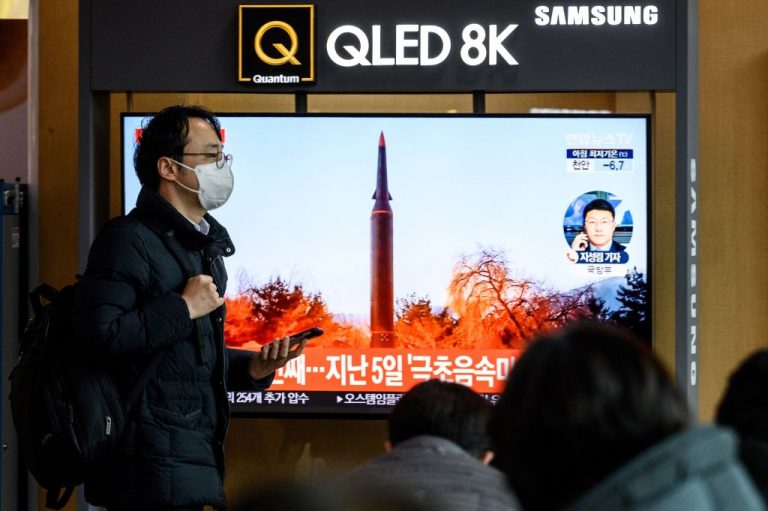On Jan. 11, North Korea reportedly tested a third ballistic missile that is believed to be more capable than the missile it tested a week earlier. The launches come after dictator Kim Jong-Un’s New Year announcement that he would boost the country’s military prowess with cutting-edge technology.
North Korean media lauded the launch as a successful test of what it called a hypersonic missile under the leadership of Kim Jong-Un. After the missile was fired, it turned and hit its target 621 miles away at sea.
State media outlet Korean Central News Agency (KCNA) claimed that the “superior maneuverability” of the missile has been verified.
According to KCNA, the missile performed a 375-mile “glide jump flight” and 240 km (149 miles) of corkscrew maneuvering before hitting the target. This is North Korea’s third reported hypersonic missile test; the first was conducted in Sept. 2021. The latest test followed the second test of a “hypersonic” missile Pyongyang had conducted on Jan. 5.
The North Korean regime has been developing and testing ballistic missiles and nuclear weapons for decades. Despite international sanctions and the nation’s crushing levels of poverty and hunger, the totalitarian regime has detonated several nuclear bombs of varying yield since 2006 and focuses much of its meager GDP on the construction of more powerful and longer-ranged weapons.
Success
You are now signed up for our newsletter
Success
Check your email to complete sign up
North Korea’s two missile tests in less than a week caused concern among its neighbors, especially South Korea, which technically remains in a civil war with the North.
“We assess that this is more advanced than the missile North Korea fired on Jan. 5, though South Korean and U.S. intelligence authorities are conducting detailed analysis,” South Korea’s Joint Chiefs of Staff (JCS) said in a statement.
Initial estimates by the JCS put the distance traveled by the Jan. 11 missile at 700 km (435 miles). The missile is believed to have traveled at a top speed of 10 times the speed of sound to a maximum altitude of 60 km (37 miles). The South Korean National Security Council (NSC) soon held an emergency meeting and expressed “strong regret” regarding Pyongyang’s most recent missile test.
While many ballistic missiles already travel at hypersonic speeds during certain stages of flight, the term “hypersonic missile” refers to weapons that are highly maneuverable and thus unpredictable, unlike existing ballistic rockets.
Officials in South Korea cast doubt on the North Korean claim that the Jan. 5 missile test had demonstrated hypersonic capabilities.
But according to Kim Dong-yup, a former South Korean Navy officer, North Korea could have conducted the Jan. 11 missile launch to send a message to those who doubted the Jan. 5 test.
“Members of the NSC urged North Korea to swiftly respond to the international community’s expectations for peace and stability on the Korean peninsula, and agree to resume dialogue and cooperation,” the South Korean presidential Blue House stated.
The U.S. State Department called out the Jan. 11 launch as a violation of U.N. Security Council Resolutions.
The missile is also said to have landed outside the exclusive economic zone of Japan. Japanese Prime Minister Fumio Kishida called Pyongyang’s continued testing of missiles “regrettable.”
Leif-Eric Easley, a professor of international studies at Seoul’s Ewha University, believes the reason behind North Korea continuously testing its missiles is an attempt to normalize its military programs and missile capability in the eyes of the international community.
On Jan. 10, the United States, Albania, France, Japan, United Kingdom, and France issued a joint statement condemning North Korea’s Jan. 5 missile test as a threat to global security.
















